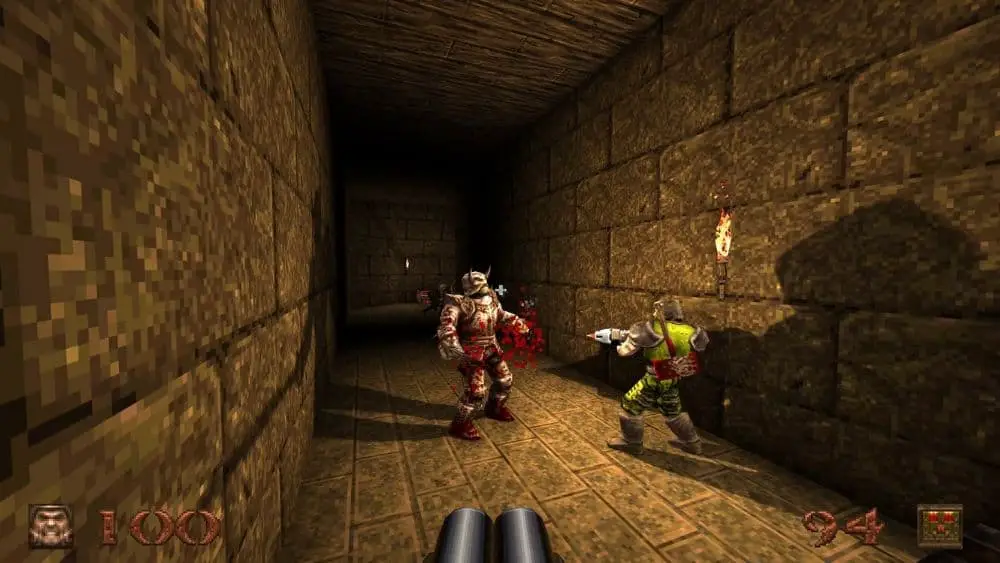In 1993 id Software released Doom, the game that started the FPS genre and resulted in a slew of games entering the market featuring similar graphics and running on the identical engine; these games were labelled Doom clones.
That’s what people called FPS games before the genre was able to define itself apart from Doom. id Software enjoyed success from Doom, with people clamoring for more of the first-person experience and in 1996, id delivered with Quake.
Quake featured many improvements over older FPS games, including fully 3D environments that the new Quake engine rendered in real-time. Though the game might not be much to look at today, not many people had the hardware to run it properly on its release.
The opening cinematic with the camera zooming past the castle as the game displayed its graphical prowess was considered a defining scene – a sign of technological advancement. Things will only look better from here. Quake also featured an exciting soundscape with Nine Inch Nails recording the game’s soundtrack; the best way to describe it would be hauntingly metal.
Quake came before Half-life and Deus Ex; the industry hadn’t explored the concept of having a compelling story to go with the gameplay yet. As a result, Quake doesn’t feature a story; instead plays out like Doom with players going to different unconnected levels; each of the four episodes features a boss at the end. But it wasn’t the single-player mode why most people played the game.
Quake’s deathmatch is an exercise of skill and patience; all levels have various powerups scattered across the map; these could be a mighty weapon or a damage/health buff. The better players knew the location of all these items, and the best players knew how to control these resources.
So as players would scurry to get the best weapons, the best players would cycle through the map denying every powerup and keeping it to themselves. A ballet of bullets and blood ensues, with players scrambling across the map, trying to stay alive and keeping their weapon fed with ammo.
Let’s look at some games like Quake that capture a similar experience and are playable today.
1. Unreal Tournament
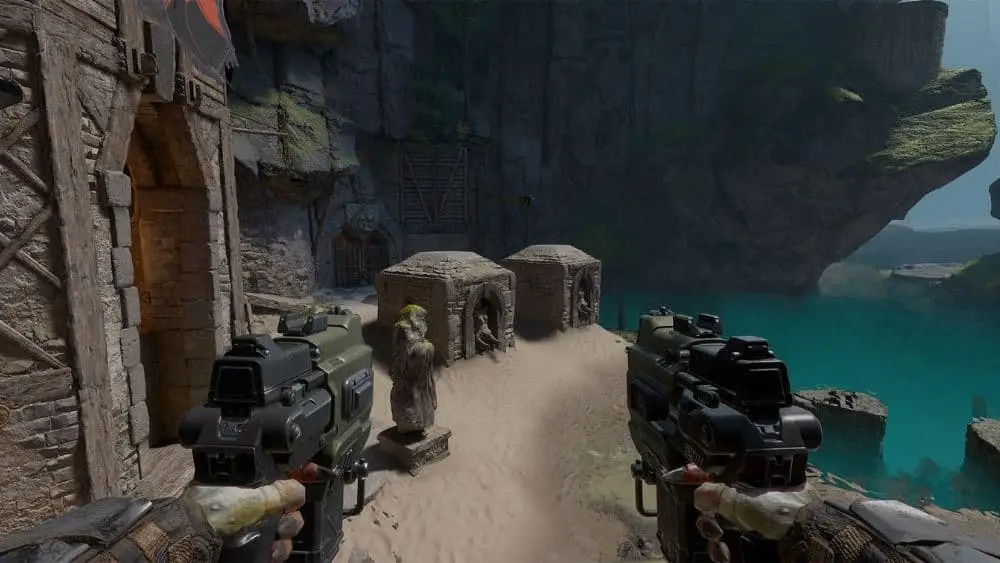
Unreal Tournament is a series of FPSs developed by Epic Games and Digital Extremes; the first title was released in 1999 to critical and commercial success.
Unreal Tournament was graphically superior to Quake in every way and featured a similar fast-paced twitch shooting gameplay and game modes that were more complex than the standard deathmatch. Game modes like Capture the Flag, Domination and Assault are peak experiences of Unreal Tournament, focusing on teamwork to gain map control and capture the objective.
Although the single-player mode for Unreal Tournament was basically offline TDMs populated with bots, it’s still fun to play, but you’re better off playing multiplayer.
While I have fonder memories of Unreal Tournament, I have to mention here that Quake had a better map design than UT; while Quake encouraged being in action at all times without a minute of respite, UT instead features more enormous levels with a lot of areas that are empty without any powerups, this makes the gameplay slower as players have to cover more ground to engage their enemy.
In conclusion, Quake has a better free-for-all experience, and Unreal focuses on team-based game modes.
2. Doom
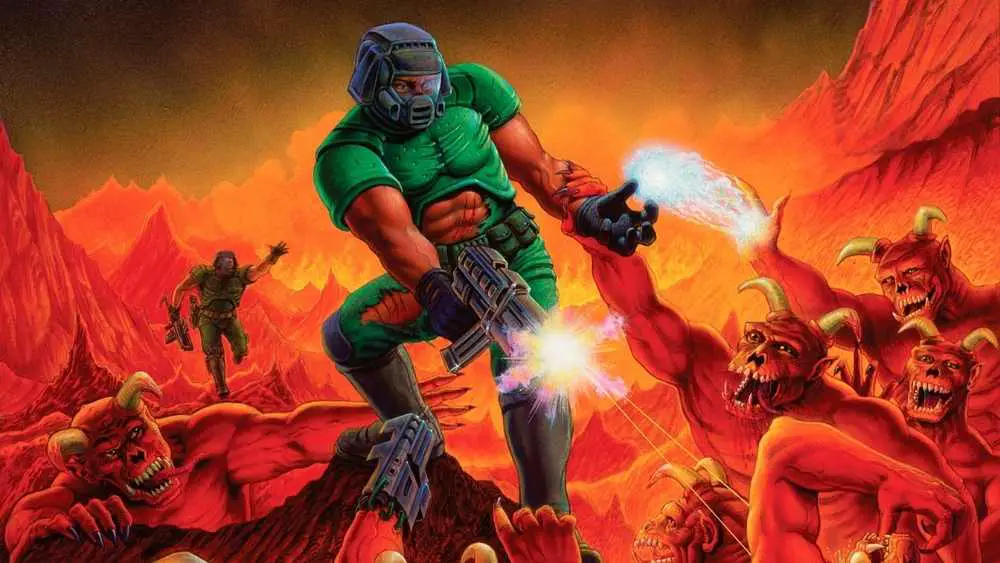
After Doom 3 failed to grasp audiences with its survival horror-esque gameplay in 2004, the series went into hibernation for over a decade, that was until in 2016, id Software soft-rebooted the series. While the game was in development since 2008, it underwent many changes and updates before changing its title from Doom 4, unveiling in 2014 as just Doom.
Doom is a story of one angry man whose sole reason for existence is to wage war on Hell, and he waged this war for thousands of years before the demons got the better of him and managed to trap him. Doom (2016) opens with human beings unwittingly freeing the Slayer, who picks up a shotgun and gets ready to blast every demon in the face.
Before Doom (2016), military shooters dominated the FPS genre, and most shooters had the mechanic of regenerating health by going into cover for a few seconds. Doom, however, has another approach in mind, the only way to recover health in Doom is to glory kill a weakened enemy.
Glory Kill drops health, and chainsawing an enemy grants ammo. These mechanics make taking cover almost useless and push the players to keep going forward against the odds.
While Doom isn’t famous for multiplayer mode, the single-player mode has enough content and replayability, featuring many secret items to collect and a gameplay loop that doesn’t get old. So, Doom is a no-brainer for fans of the old school FPS games.
Remember, “The only thing they fear is you.”
3. Quake Live
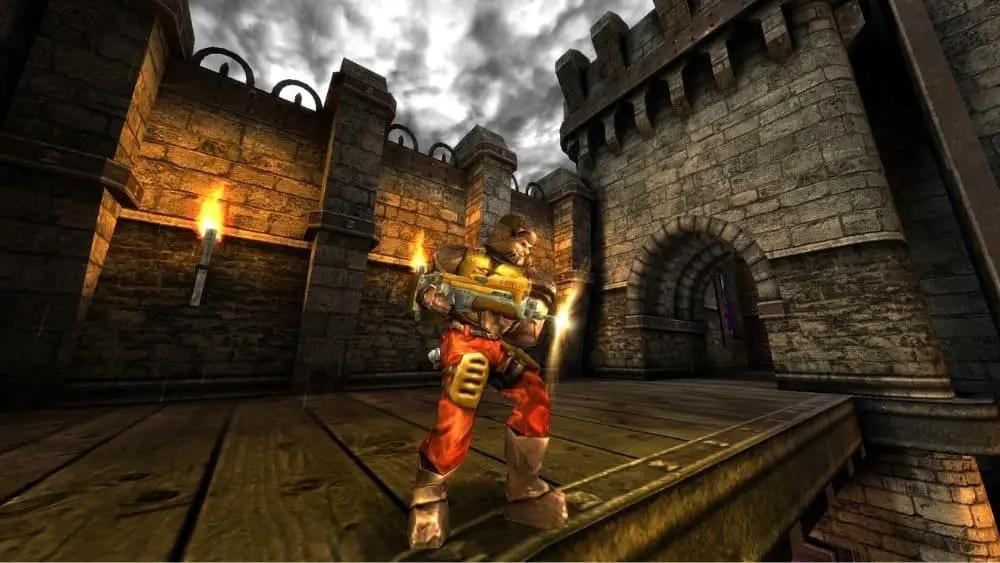
Quake Live has had a roller coaster ride in terms of its availability. Initially, Quake Live was an updated version of Quake III launched as a subscription-based browser game. However, id Software dropped this model soon, and the game was re-released as a standalone game on steam.
Currently, the game is not free to play at all and has let go of the subscription-based model.
Quake Live is more or less a remake of Quake III with updated visuals and skill-based matchmaking, which was missing from older games.
Unfortunately, it’s not the most popular FPS game, and while it does have a player base playing regularly, your mileage may vary depending on which server is optimum for you.
4. Wrath: Aeon of Ruin
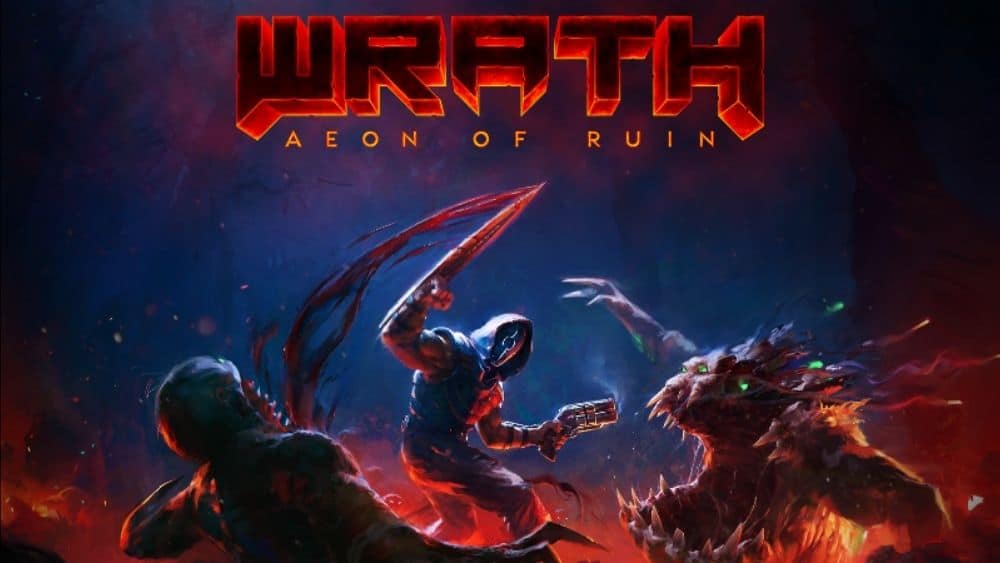
Wrath is a callback to the older FPS games when Quake and Doom dominated the market, developed by KillPixel and published by 3D Realms. While the game is still in early access, it does show a lot of promise combining the fast-paced gunplay of games like Quake and Doom with pseudo RPG mechanics.
The game puts players in the shoes of the Outlander and progress levels collecting items and abilities that help in combat and the explorative aspects of the game. The game is similar to the newer Doom (s) in that resources are gained through the corpses of the fallen enemies, and certain weapons work against certain enemies introducing an element of strategy and decision making that affect the player’s efficiency.
The game has a total of three hub-worlds featuring five stages, each with its fair share of enemies and bosses. Surprisingly, the game also treats save files as a resource, not allowing players to save scum their way to victory.
Wrath is a nostalgic trip that requires skill and memory to beat it.
5. Project Warlock
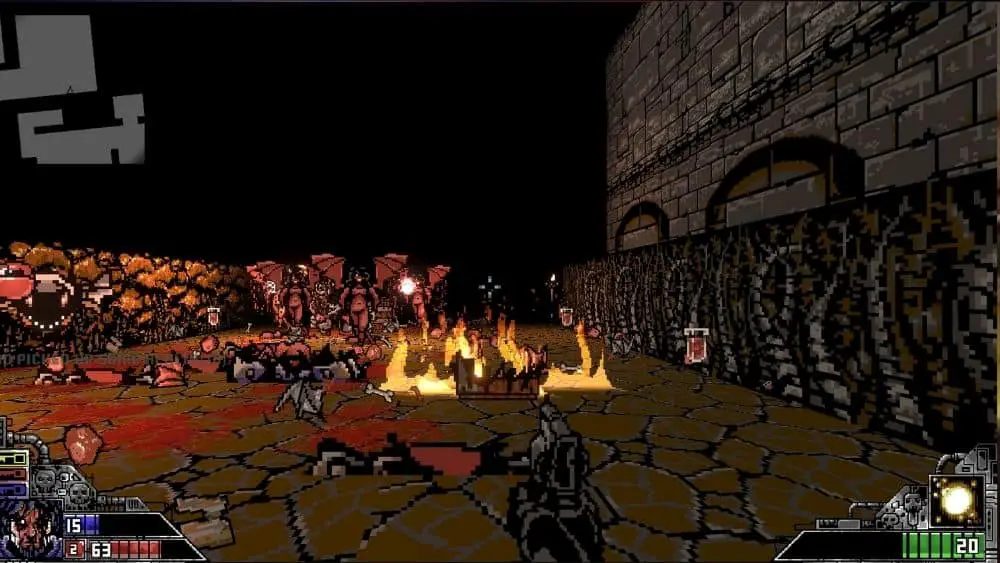
Project Warlock is another title that encapsulates the feeling of older FPS games. The game was released in 2018 and was developed solely by a high school student – Jakub Cislo.
Like Wrath, Project Warlock features non-linear levels that the player must battle through and progress using light-RPG mechanics. The game plays very much like older Dooms; however, it also features a few unconventional weapons in the form of magic spells.
At the end of each stage, players are transported back to the hub world, where players can access Warlock’s workshop, spend upgrade/XP points to purchase new spells/weapon upgrades, and invest in player perks.
Notably, the game doesn’t feature any option for saving the game in between a level, making it even more complicated than the original Quake. If the player dies during a mission, they are respawned back to the beginning of the stage until they run out of lives.
Project Warlock is perhaps the more challenging of the lot while also being incredibly balanced.
6. Amid Evil
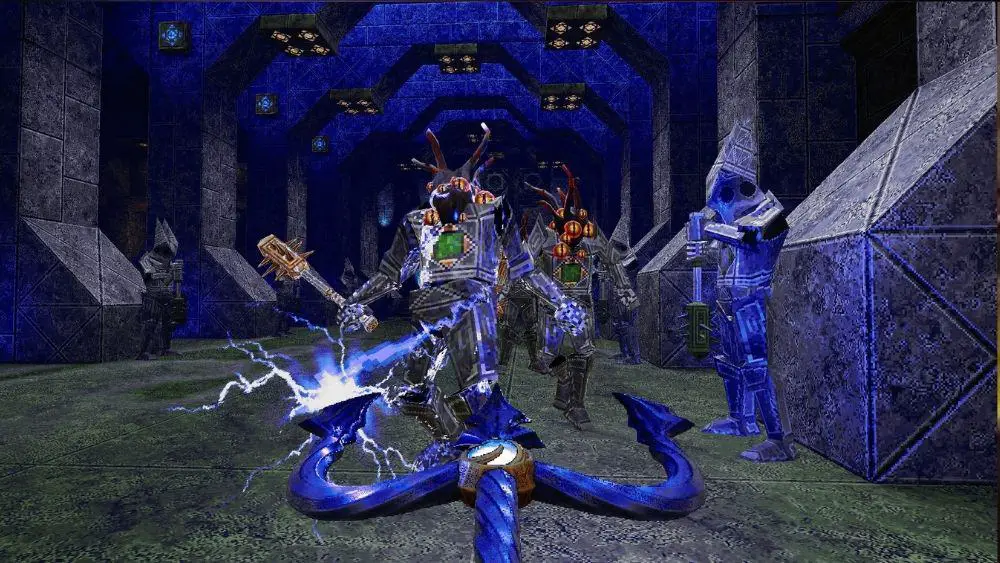
Amid Evil is a title that was released in 2019 and developed by Indefatigable published by New Blood Interactive. The game is often credited as the spiritual successor to 1995’s hit FPS Hexen, and looking at the game, the comparison isn’t lost to me.
Amid Evil features a dark fantasy theme with retro aesthetics that come together beautifully thanks to the Unreal Engine. Unlike Wrath or Warlock, Amid Evil captures the experience of classic Quake without introducing any progression system or RPG mechanics.
Instead, the game plays like Hexen, where players must use magical weapons to defeat a number of enemies and bosses to progress through non-linear levels that players can access in the central hub world. Players must move through the map finding various items and keys to unlock paths to the final boss.
Amid Evil advertises itself as a nostalgic trip to the older days of FPS and delivers flawlessly.
7. Dusk
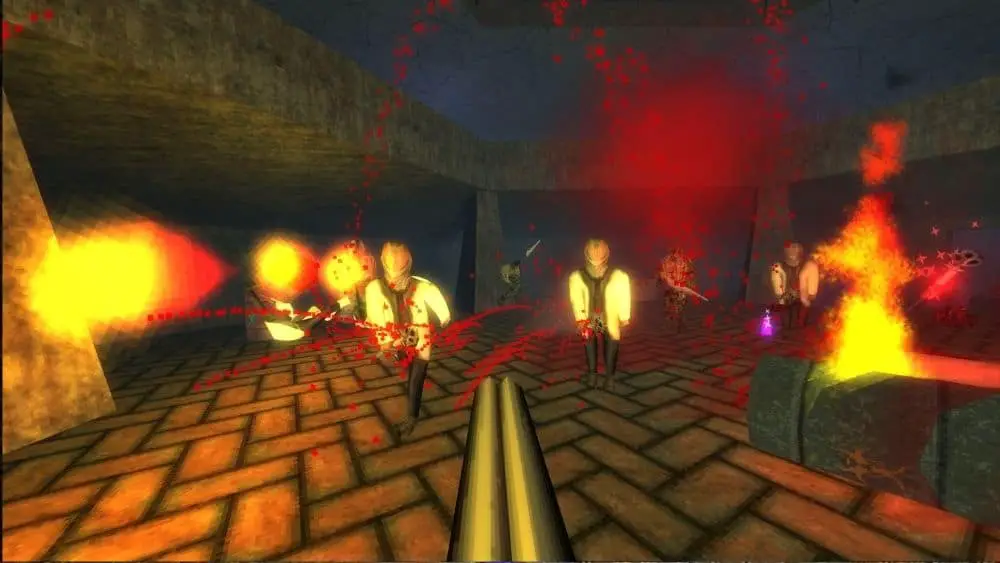
Dusk is another inspired title by New Blood Interactive, released in 2018 and developed by David Szymanski (another game developed by one person). The game plays as anyone would expect. The objective for each stage is to reach the exit point; various obstacles hinder players in their journey, which could come in the form of environmental hazards or crazed blood-thirsty cultists.
The game gives players access to a massive arsenal of weapons that look fantastic and are satisfying to shoot with some great visuals and sound design. The weapons range from pistols to crossbows and magic swords which is in line with the Lovecraftian setting of the game.
The game features a campaign with three episodes and a story more compelling than OG Doom and UTs and a multiplayer deathmatch mode that supports up to sixteen players. Dusk also features an Endless Survival mode that allows players to show off their finesse and skills as they take on an infinite horde of ruthless enemies, backflipping over them as the player pumps them full of lead.
Conclusion
Many people credit Doom with starting the FPS genre, and while it has since grown and accommodates a wide variety of games now, it is always fun to go back to the initial concept of blowing holes in demons and collecting colour matched keycards without caring for any story or cowering behind a corner as your health magically restores.
Older FPS were an actual test of skill and memory that is seeing a slow resurgence in the industry today.
Want to find out similar suggestions for other games as well? Visit our Games Like hub.

